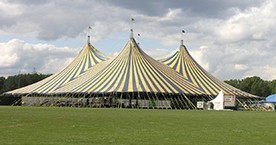Unlocking the Power of Helical Pile Solutions: Versatility Across Diverse Applications
- Frank Leigh
- Feb 21, 2024
- 3 min read
Innovation in construction and engineering has paved the way for efficient, reliable, and sustainable solutions to various challenges encountered in the field. One such groundbreaking solution is the helical pile, also known as screw piles or ground anchors. These cylindrical steel shafts feature helical flights, resembling large screws, which enable them to be effectively screwed into the ground to provide stable foundational support. The versatility of helical pile solutions spans across a wide range of applications, revolutionising industries and offering sustainable alternatives to traditional construction methods.
Understanding Helical Piles
Helical piles are engineered foundation systems designed to support structures and stabilise soil in a variety of conditions. Their design allows for easy installation without the need for extensive excavation or concrete curing, making them suitable for projects where time, space, or environmental constraints are factors. The helical shape of these piles provides exceptional load-bearing capacity and resistance to movement, ensuring stability even in challenging soil conditions.
Diverse Applications - solutions using helical screw piles!
1. Residential Construction:
Helical piles are increasingly used in residential construction for supporting foundations of homes, decks, patios, and retaining walls.
They offer a cost-effective and time-efficient alternative to traditional concrete foundations, especially in areas with poor soil conditions.
2. Commercial and Industrial Projects:
In commercial and industrial settings, helical piles are utilised for supporting structures such as warehouses, factories, and telecommunications towers.
Their ability to be installed in confined spaces and environmentally sensitive areas makes them ideal for projects where traditional methods may be impractical.
3. Infrastructure Development:
Helical piles play a crucial role in infrastructure development, including bridges, highways, and utility installations.
Their versatility and load-bearing capacity make them suitable for stabilising embankments, supporting signage, and securing utility poles in diverse soil conditions.
4. Renewable Energy Installations:
The renewable energy sector benefits from helical piles for anchoring solar panels, wind turbines, and other alternative energy systems.
Their ease of installation and minimal environmental impact align well with the sustainable ethos of renewable energy projects.
5. Marine and Coastal Engineering:
Helical piles are employed in marine and coastal engineering projects for securing docks, piers, and seawalls.
Their corrosion-resistant properties make them particularly suitable for saltwater environments, providing durable support for coastal structures.
6. Emergency Response and Temporary Structures:
Helical piles offer rapid deployment and reliable stabilisation for temporary structures in emergency response situations, such as disaster relief efforts or temporary shelters.
Their versatility and ease of removal make them ideal for temporary applications where quick installation and removal are essential.
Advantages of Helical Piles
Rapid Installation: Helical piles can be installed quickly, reducing construction time and labour costs.
Minimal Site Disturbance: They require minimal excavation, resulting in less disruption to the surrounding environment.
Versatility: Helical piles can be installed in various soil conditions and terrain types, offering flexibility in project design.
Cost-Effectiveness: Compared to traditional foundation methods, helical piles often provide cost savings due to reduced material and labour requirements.
Sustainability: Their minimal environmental impact and ability to be reused or recycled align with sustainability goals.
Helical pile solutions represent a paradigm shift in foundation engineering, offering a versatile, efficient, and sustainable alternative to traditional construction methods. From residential projects to large-scale infrastructure developments, the applications of helical piles are diverse and far-reaching. As industries continue to prioritise efficiency, sustainability, and resilience, the adoption of helical pile solutions is expected to grow, shaping the future of construction and engineering worldwide.
#piling #screwpiles #construction #buildingfoundations #ecofriendly #pilingsolutions #projects #buildbetter #buildfaster #structural #noconcrete #underpinning #foundationrepairs #temporarystructures #newbuildfoundations #bridgefoundations #machineryforhire #trainingavailable #constructionprojects
#UKConstruction #StructuralEngineering #Screwpiles #HelicalPiles #StructuralRepair #ConstructionUK #SubsidenceRepair #PileDriving #ConstructionSolutions #StructuralAnchors #UKSurveyors #ConstructionProjects #BuildingFoundations #UKCivilEngineering #PileDriversUK #subsidence #temporarystructures #events #exhibitions #festivals #staging #minimalgrounddisturbance #reusable #removablefoundations #ecofriendly #treeroots #pilingsolutions #foundationsolutions #protectthetreeroots #treeroots #solarpanelinstallations
.jpg)








Comments